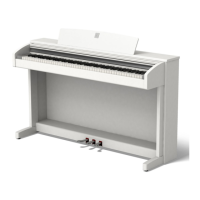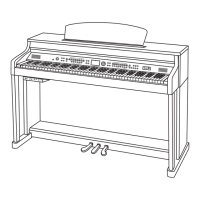Why is there no sound coming from my Dynatone Musical Instrument?
- MMr. Bryan PrattAug 3, 2025
Several factors might cause a lack of sound from your Dynatone Musical Instrument. First, check that the power cord is properly plugged into the AC outlet. Second, ensure the volume isn't set too low by adjusting it. Lastly, if headphones are plugged in, unplug them to hear sound from the instrument's speakers.


